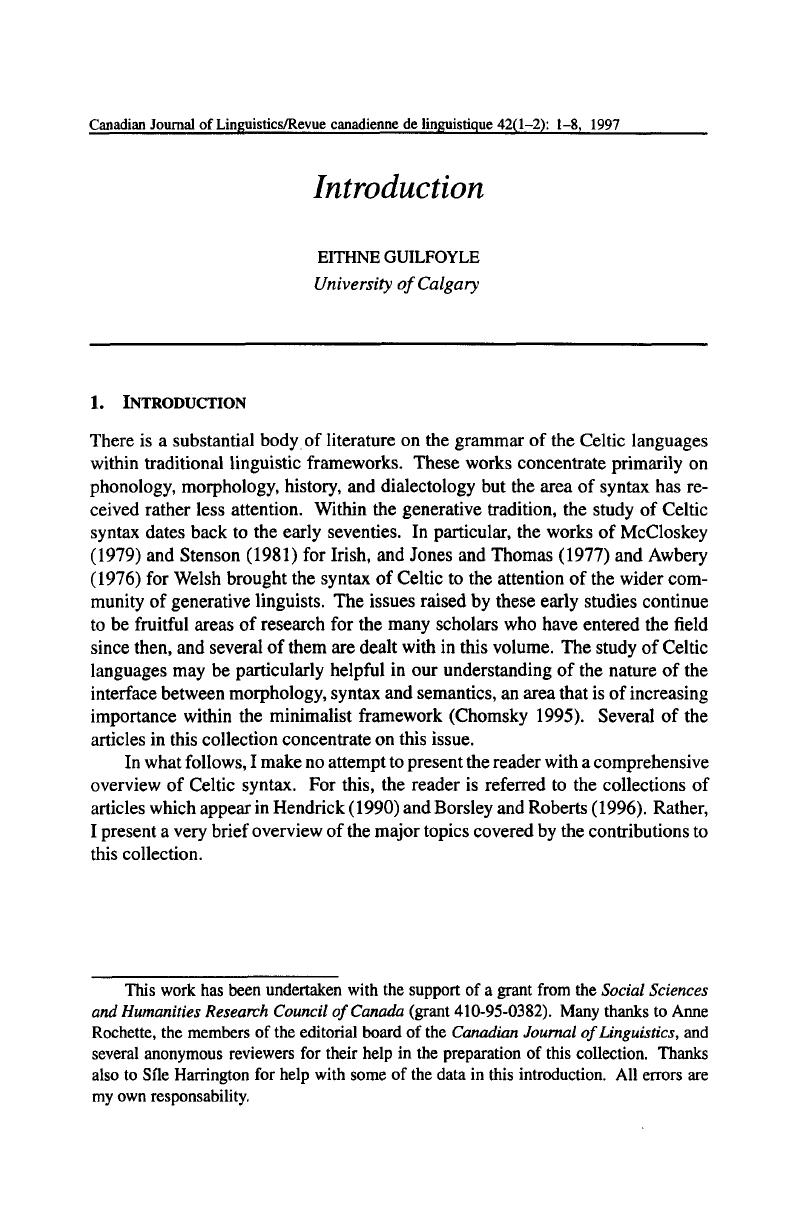No CrossRef data available.
Article contents
Introduction
Published online by Cambridge University Press: 27 June 2016
Abstract

- Type
- Articles
- Information
- Canadian Journal of Linguistics/Revue canadienne de linguistique , Volume 42 , Special Issue 1-2: Topics in Celtic Syntax , June 1997 , pp. 1 - 8
- Copyright
- Copyright © Canadian Linguistic Association 1997




